
MS4 Stormwater Management
Maintaining Your Municipal Separate Storm Sewer Systems
What is MS4 and why is stormwater pollution control important?
Municipal Separate Storm Sewer Systems (MS4s) are sewer systems which transport home wastewater separately from storm runoff water. Due to the structure of MS4s, it’s necessary to implement measures to reduce storm drain water pollutants including organic debris, litter, oil, sediment, and construction site runoff. In nature, rain water would naturally be filtered through the ground. However, now that roads and urban sprawls cover much of the landscape, water is prone to flow faster and pick up more debris along the way. Without stormwater pollution prevention programs in place, water runoff can and will over-saturate natural bodies of water with pollutants which directly harm wildlife, or which cause indirect harm with algal blooms, changes to the ecosystem, and flooding.
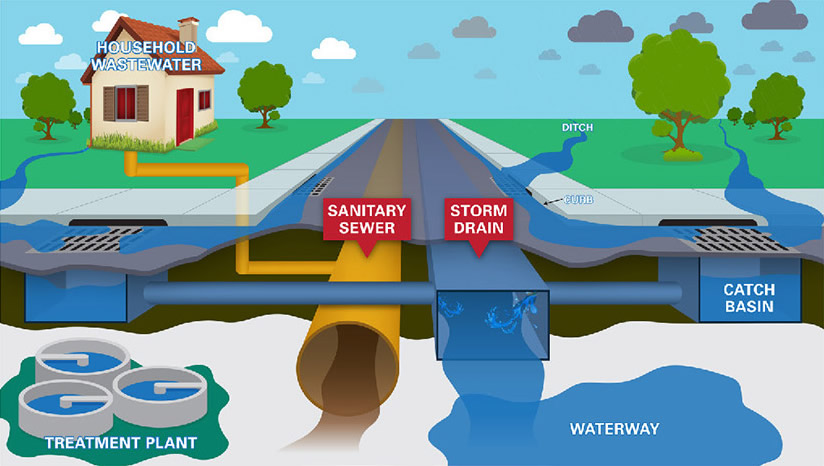
MS4 Sewer Systems – (Image source: VT.edu)
How are street sweepers contributing to water runoff pollution control?
Street sweepers don’t simply improve an area’s appearance; they also collect solid debris and sediment before they can be washed down the storm sewer drains, by the inevitable rainfall, and keeps it out of local creeks and rivers. That’s why it is so critical to ensure a solid sweeping schedule, plan, and, just as important, quality street sweepers are in place to handle any town or city’s stormwater management initiative.
Which type of street sweeper is best for your MS4 program?
Generally speaking, there are four main varieties of street sweepers, categorized by their collection method. Each perform exceptionally well and excel at maintaining your streets and roadways while protecting your stormwater systems; however, keep in mind they are built to truly excel in certain applications. We are always here to help you determine which would best suit your specific needs. Schedule a demo today!
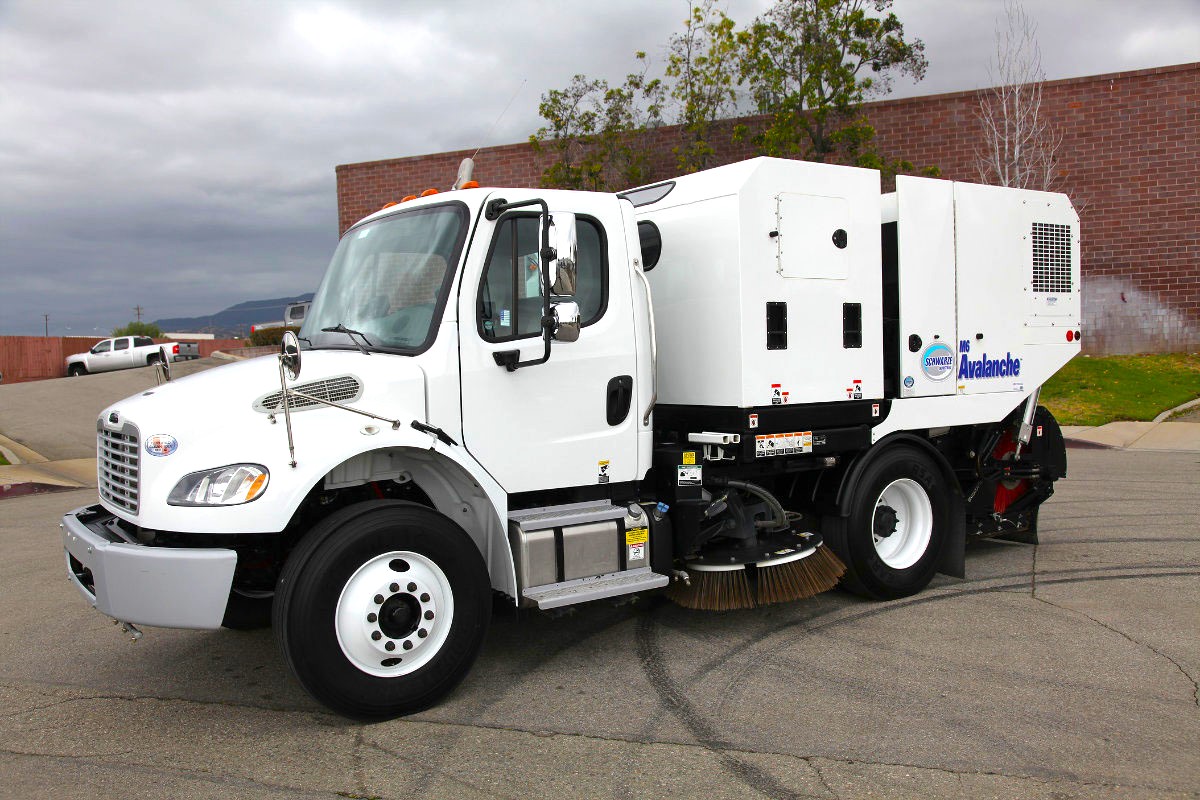
Mechanical Sweeping
Mechanical street sweepers are brute-force work horses of the sweeping world. They can handle bulky, heavy debris without issue. They clean by utilizing their side gutter brooms that push and fling debris underneath the sweeper, into the path of the main broom, which transfers the debris onto a conveyor / elevator system, and then finally dumps the payload into the onboard hopper.
Mechanical street sweepers are just fine for picking up leaves, litter, and larger debris, but they aren’t your best option for keeping fine dust and sediment off the road. They’ll keep your streets looking nice, and they do offer some pollution-reduction benefits, but they aren’t designed to collect the tiniest particles.
Explore Mechanical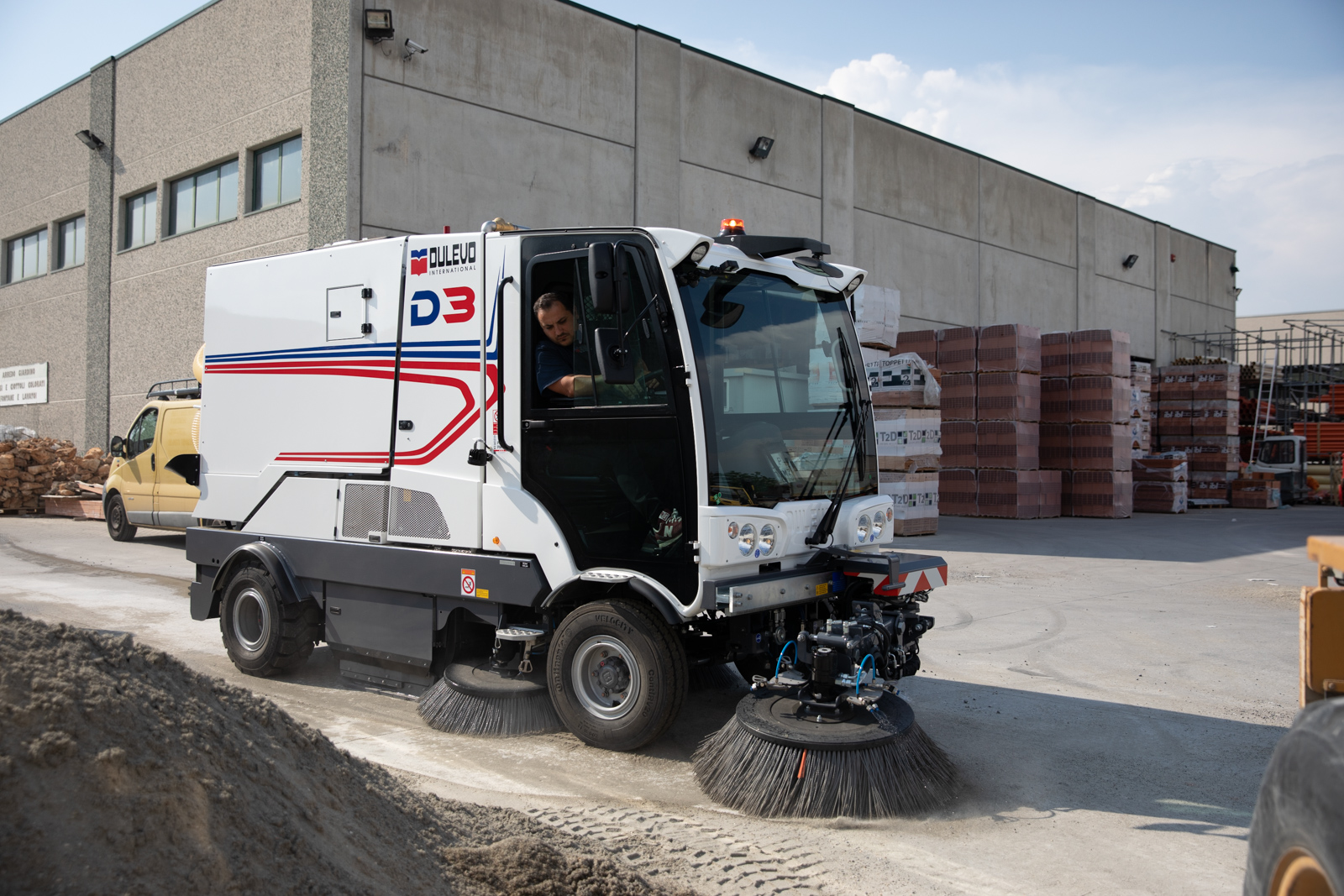
Vac-Assist Mechanical
After debris is pushed under the sweeper by the gutter brooms, a powerful vacuum aids in the mechanical sweeping collection of debris into the hopper. Dulevo street sweepers take this sweeping method to the absolute next level with their ingenius build quality and design. Their air filtration systems that are integrated into the sweep system on the Dulevo D3 and D6 are unmatched for heavy duty sweeping in a variety of environments.
Our line of street sweepers with this vacuum-assisted collection system bring significant advantages in pollutant removal. As you would expect, these sweepers are able to pick up debris with ease, regardless of particle size.
Explore Vacuum-Assisted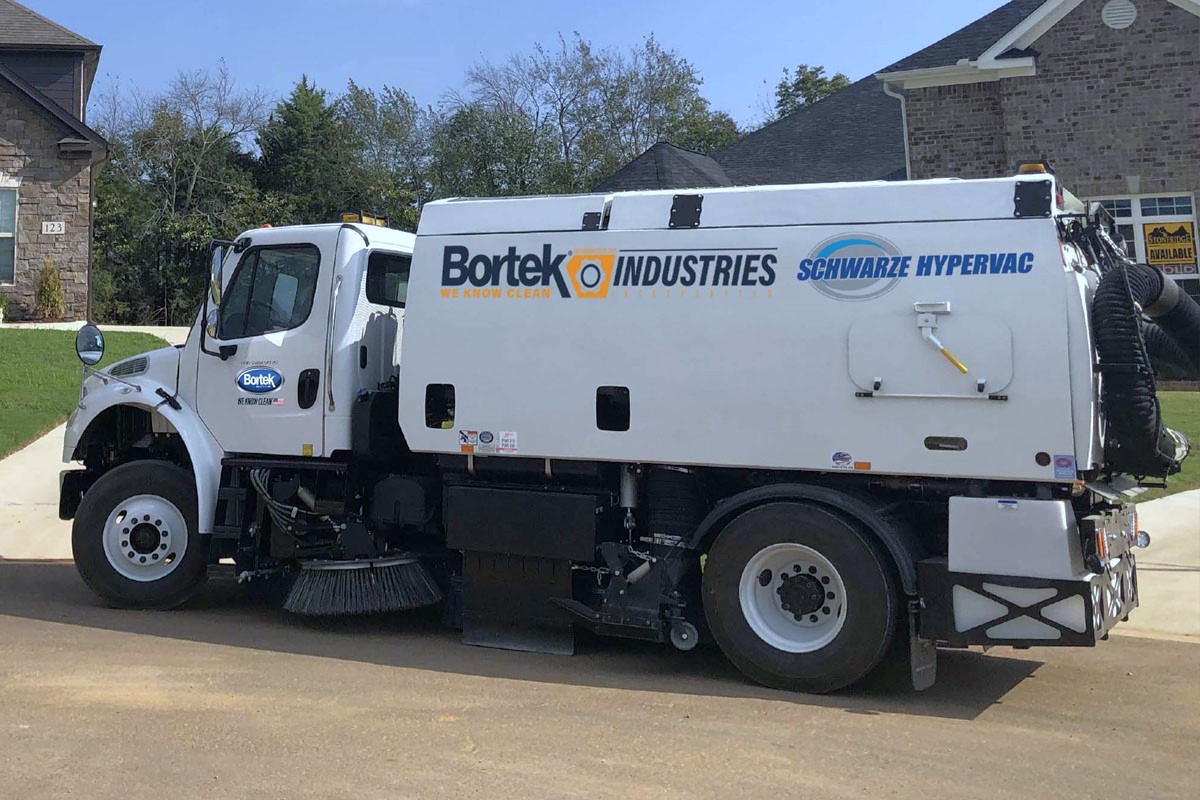
Vacuum Sweeping
These vacuum street sweepers are able to pick up both fine dust and heavier debris from the road, thanks to the combined power of their gutter brooms and vacuum-powered collection method. The power of air means that finer particles can be dislodged from rough road surfaces than could be with mechanical sweeping methods alone. The power of Schwarze Street Sweepers becomes very clear when you operate these machines. Be sure to explore the HyperVac, Aero, Updraft, and Gale Force street sweepers.
This approach to sweeping is a very powerful one, particularly where fine sands and debris needs swept up and kept from entering into the storm drain system.
Explore Vacuum Sweeping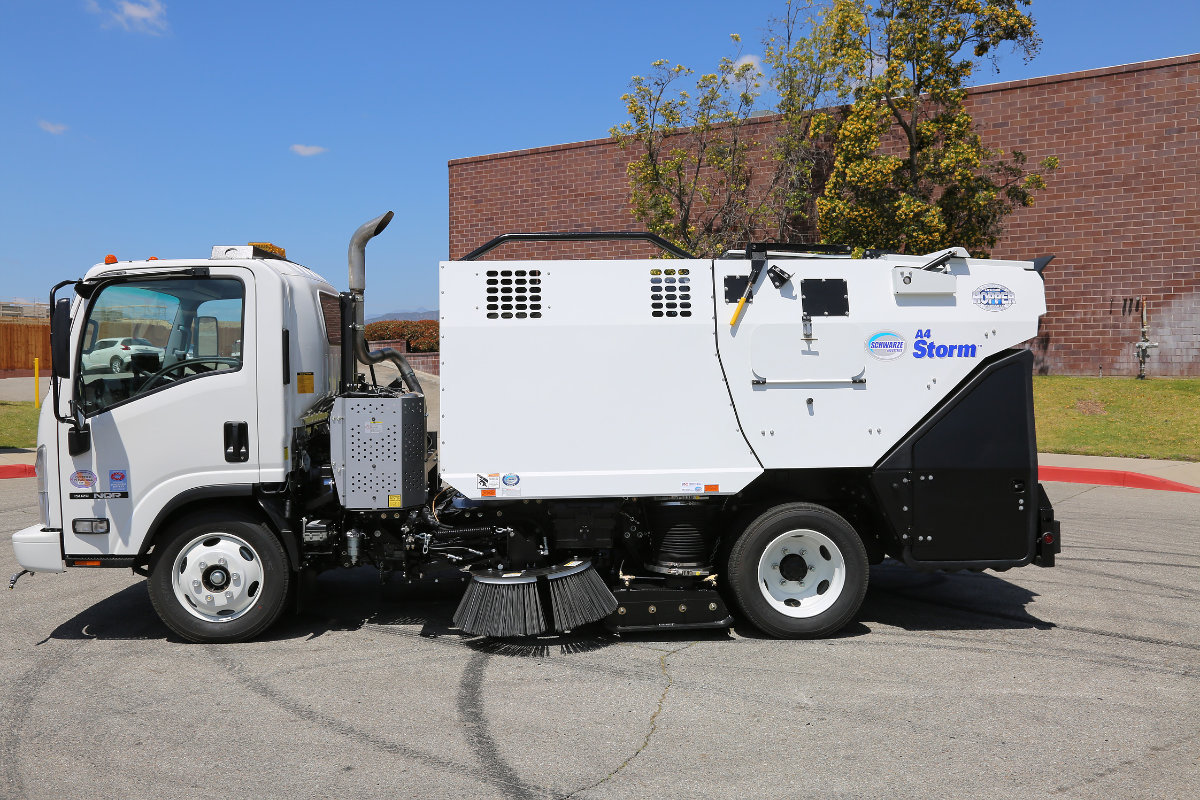
Regenerative Air
Regenerative air sweepers utilize powerful vacuums and directed airflow to pick up everything. Our line of Schwarze Industries regenerative air sweepers have the extra benefit of filtering vacuumed air and feeding it back into the vacuum. This means that tiny particles aren’t just being collected from the ground; they’re also being more securely trapped after collection, so even less fine dust ends up back in the air.
The stormwater pollution reduction of regen sweepers is slightly better than that of vac-assist sweepers. Also, thanks to their excellent air filtration, these sweepers are the best at picking up everything and preventing even the finest dust from escaping after collection.
Explore Regenerative AirWhat are the best practices for reducing stormwater pollution with street sweeping?
Timing and Frequency
In general, the more often a road is swept, the better the results. At an absolute minimum, streets should be swept twice a year, but there are those who opt to sweep as often as biweekly or even daily, according to the location and time of year. Sweeping has been shown to be more thorough if performed with two sweepers working in tandem, or with a single vehicle making a second pass over the same area.
For the best results, it’s advised to time street sweeping with the following:
Curb Access
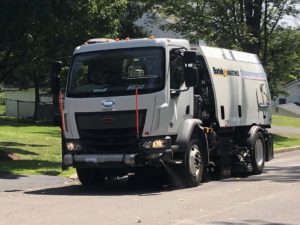 Debris and pollutants tend to collect against the curbs of streets and edges of parking lots. Consider restricting parking in areas scheduled to be swept so that sweepers are able to access the portion of the road most in need of cleaning. When buying or renting a street sweeper, consider whether your route would benefit from a sweeper with improved broom control.
Debris and pollutants tend to collect against the curbs of streets and edges of parking lots. Consider restricting parking in areas scheduled to be swept so that sweepers are able to access the portion of the road most in need of cleaning. When buying or renting a street sweeper, consider whether your route would benefit from a sweeper with improved broom control.
Area Priorities and Routes
Plan your sweeping route efficiently. Areas to prioritize are those which drain into sensitive bodies of water, those with greater tree coverage, and (obviously) those which are the dirtiest in general. Also keep in mind the distance from the sweeping area to the dump site; time spent traveling to the dump site is time that could be better spent sweeping.
Waste disposal
Make sure your dump site is organized for proper waste disposal so your collected pollutants don’t just run off from another location and undo your progress. Even better, keep your sweepers out of the rain and wash them in a place where the any residual contaminants on the vehicles themselves won’t be washed into the storm drains.
Training
Even the best laid plans and most advanced street sweepers can go to waste in the hands of an untrained individual. Be sure to follow through with your MS4 initiative and educate your drivers on the operation of your sweeper vehicles. In particular, pay attention to emptying the hopper when full and periodically replacing worn parts.1
1. “Pollution Prevention and the MS4 Program” – pca.state.mn.us
New Street Sweepers | Rental Street Sweepers | Reconditioned Street Sweepers
